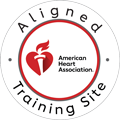What Are The Hs and Ts of ACLS?
June 10, 2025
Proper Positioning When Using a Pocket Mask for CPR
April 8, 2025
How Many Compressions for CPR?
March 13, 2025
How to Use an AED Essential Steps for Success?
February 10, 2025
Key Interventions for Pediatric Breathing Issues
January 6, 2025
Breaking Down the Components of Effective CPR
December 4, 2024
The Art of Rescue Breathing – Essential Tips for CPR
November 5, 2024
When to Stop CPR: Understanding Critical Moments in Resuscitation
October 17, 2024
Who Needs ACLS Certification?
October 10, 2024
The Critical Role of Rescue Breathing in Saving Lives
September 9, 2024
Mastering the Rhythm: CPR Ratio Training Techniques
August 21, 2024
Best Location for ACLS and BLS Renewal in Tampa
July 30, 2024
CPR and First Aid: Why They’re Crucial for Babysitters
April 10, 2024
Mastering AHA PALS: Dive Deep into Essential Course Content
March 19, 2024
Beyond the Books: Practical CPR Training Tips for Aspiring Nurses
February 13, 2024
Heart Health Heroes: Learn CPR the AHA Way in Tampa Bay
December 19, 2023
Who Needs AHA CPR Certifications in Tampa?
November 17, 2023
CPR Classes Tampa: Be Prepared to Save Lives in Minutes
October 9, 2023
The Ultimate CPR Training Handbook: Techniques, Tips, and Importance
September 25, 2023
American Heart Association CPR Classes in Tampa
August 10, 2023
What is Chronic Kidney Disease by Samiya Tazeen
August 20, 2015
What is Macular Degeneration by Lilli Goldman
July 25, 2015
How Do You Treat Tuberculosis by Ammara Semeen
July 11, 2015
What is Aortic Valve Stenosis by Madison Baysinger
June 26, 2015
What is Down Syndrome by Sabrina Hassan
May 28, 2015
What are the Stages of Lung Cancer by Naeima Seddiqi
May 23, 2015
Micro Lab Report | Staphylococcus epidermidis
May 22, 2015
What is Marfan Syndrome by Jenna Visintine
May 18, 2015
What is Pernicious Anemia?
May 17, 2015
ACLS Class, Tampa | Cincinnati Stroke Scale | CPR Tampa
April 20, 2015
How to Use an AED | CPR Tampa’s Palm Harbor Location
April 19, 2015
Does Race and Gender Affect Osteoporosis by Ngohile Yakubu
April 13, 2015

